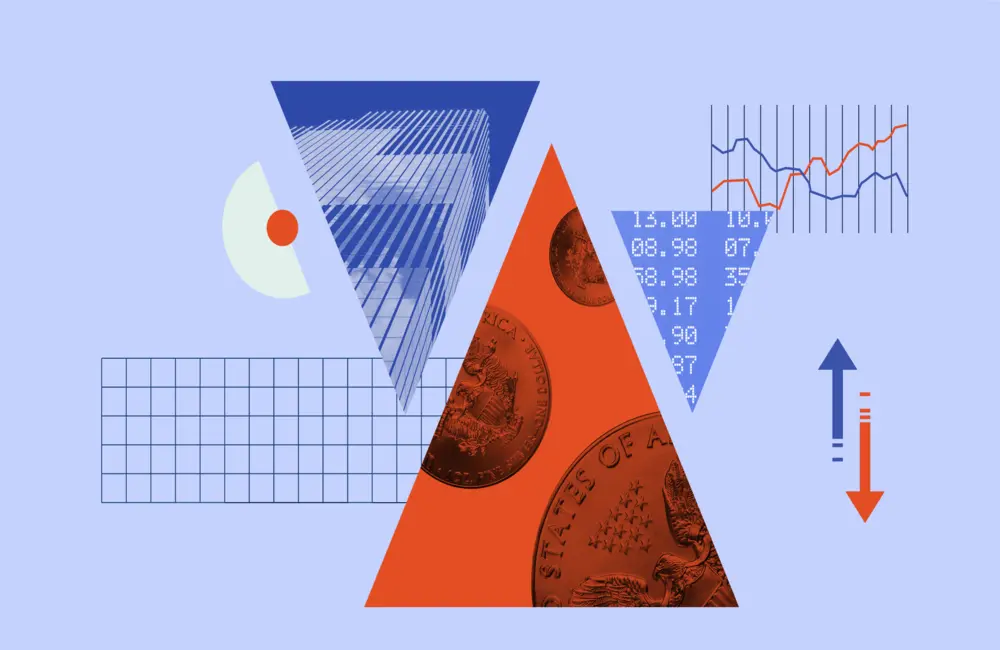At 8.00 am Wednesday, suggesting yesterday’s losses will extend at the open.
The broad-market S&P 500 overseas whipsawed through the day to finish down 0.4 percent, as selling eased on the index’s fifth straight day of losses. The index had lost 9.8% in the four previous trading days. The bruised technology-heavy Nasdaq Composite finished 0.2% higher on the back of robust results from Oracle, while the Dow Jones Industrial Average fell 0.5%.
Federal Reserve officials began a two-day meeting to decide on interest rates Tuesday with growing concerns the central bank will be backed into a corner of supersized hikes that will upend growth. US inflation continued to accelerate in May, prompting traders to now pencil in the bank announcing a 0.75% hike at the meeting conclusion on Wednesday (Thursday 4am AEST). It would be the largest since 1994. Markets now anticipate interest rates will reach the range of 3.5% to 4% in December, a jump from 3% last week.
Rising rate hike expectations are tarnishing optimism about the US economy. Bank of America’s June monthly fund manager survey saw stagflation fears escalate and profit forecasts fall to 2008 levels.
Locally, the S&P/ASX 200 finished down 3.6% to 6,686.0 on Tuesday, its largest loss since May 2020, and pushed into correction territory on the back of surging bond yields.
Losses across all 11 sectors pushed the benchmark index to its lowest close since February 2021 after trade resumed following a holiday weekend and heavy selling of U.S. equities.
Shares of companies that touch or process commodities were hit hard, as were fears of global inflation and a weaker Australian dollar.
Block tumbled 15% and WiseTech retreated 6.0% as the tech stocks were down 4.5%.
Commonwealth, Westpac, NAB and ANZ banks lost between 2.75% and 4.6%.
Buy-now-pay-later player Zip tumbled 16% to be the ASX 200 component that suffered the biggest fall.
The ASX 200 is roughly 12% off its peak from August 2021.
Brent crude oil prices fell 1% in the commodity markets to US$121.09 a barrel. Iron ore lost 1.8% to US$134.20. Gold fell 0.2% to US$1810.00.
Longer bond markets took a hammering on Tuesday and the yield on Australian 2 Year government bonds shot to 3.03% and the 10 Year to 3.95%. US bonds were still drifting lower but at a slower pace with yields on 2 year Treasury notes, particularly sensitive to shifts in interest rates, rising to 3.43% and yield on 10 year US Treasury notes rising to 3.47%.
The Aussie dollar dropped to 68.70 US cents. The Wall Street Journal Dollar Index, which measures the US dollar against 16 other currencies rose to 98.00, its highest point in more than three years.
Asia
Chinese stocks finished up, led by factories and energy. Car makers have climbed in recent sessions on reviving demand prospects while Chinese oil majors follow crude futures higher. Great Wall Motor soared 7.3% and Chongqing Changan Automobile climbed 10%, while PetroChina rose 5.4% and Cnooc advanced 4.0%. Laggards included nonferrous metal miners, with Zijin Mining, Ganfeng Lithium and Tianqi Lithium all losing over 1%. The Shanghai Composite Index gained 1.0% to 3288.91, the Shenzhen Composite Index added 0.2%, and the ChiNext Price Index rose 0.1%.
Hong Kong stocks ended the day little changed, having erased earlier losses during the session, with the benchmark Hang Seng Index closing at 21067.99. Futures linked to U.S. equity benchmarks, which “have taken the edge off the negativity in Asian markets today,” rose slightly, despite fears of recession weighing on sentiment, Oanda senior market analyst Jeffrey Halley said in a note. Lenders guided the gains, as BOC Hong Kong climbed 4.8%, Hang Seng Bank increased 2.4% and HSBC jumped 1.7%. The Hang Seng Tech Index closed 0.1% lower at 4595.74.
Japan’s Nikkei Stock Average lost 1.3% to end at 26629.86, following Wall Street’s steep drop overnight, though the benchmark’s losses were trimmed somewhat in the face of a pickup in U.S. stock futures. The risk-averse mindset was sparked off from hotter-than-expected U.S. CPI data released on Friday, which unsettled markets to lift Fed's rate hikes higher than previously expected, says Tina Teng, a markets analyst at CMC Markets in an email. The losses on Nikkei were widespread, with Daiichi Sankyo losing 7.0%, NEXON down 5.65% and Hoya off 5.2%.
Europe
European markets declined, following mixed trading in Asia and in front of the US being called to open slightly higher. The pan-European Stoxx Europe 600 and French CAC 40 both declined over 1%, and the German DAX lagged 0.9%. The FTSE 100 in London slid 0.25%.
“Expectations appear to be rising by the hour for the Fed decision due Wednesday; the consensus for 50 bps a week ago is how many banks’ base case and the committee is being suggested to hike 75 bps and even 100 bps is in the mix,” analysts at IG say in a note.
North America
US stocks fell, extending their losses in volatile trading as investors positioned for a mammoth rate hike following this week’s Federal Reserve interest rate meeting.
The S&P 500 broad-market index swung between gains and losses throughout the day to end down 0.4 percent, though selling was more moderate on the index’s fifth straight day of losses. The index had lost 9.8% in the previous four trading sessions. The beleaguered technology-heavy Nasdaq Composite managed a 0.2% gain on the back of strong results from Oracle, while the Dow Jones Industrial Average ended down 0.5%.
Federal Reserve officials meet Tuesday for a two-day interest rate setting meeting amid heightened fears the central bank will be pushed into giant-rate bombs that could put a damper on growth. Following data on Friday that showed US inflation services continued to accelerate in May, traders are now pricing in a 0.75% hike from the bank at the end of the meeting on Wednesday (Thursday, 4am AEST). It would be the largest such class since 1994. Markets now should see interest rates touch between 3.5% and 4% by December, up from 3% just last week.
Soaring rate hike expectations are darkening optimism about the US economy. Bank of America’s June monthly fund manager survey revealed growing fears of stagflation and profit forecasts at levels not seen since 2008.























